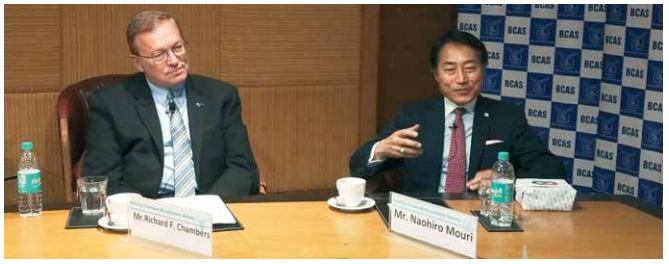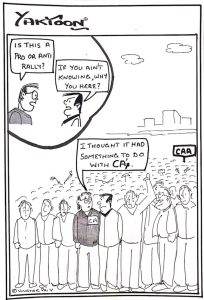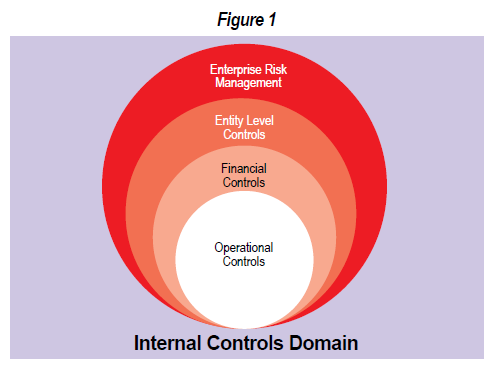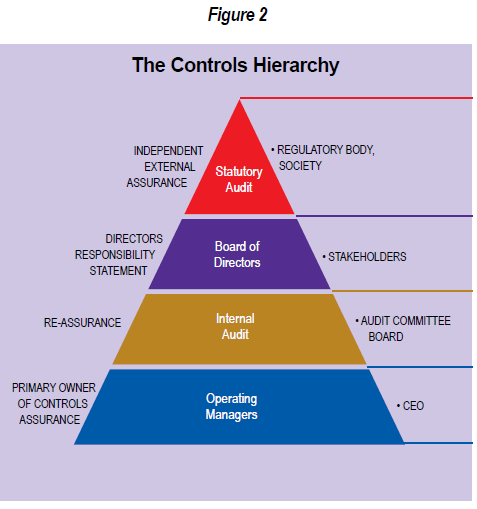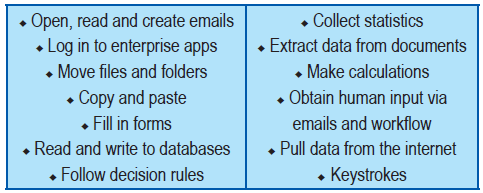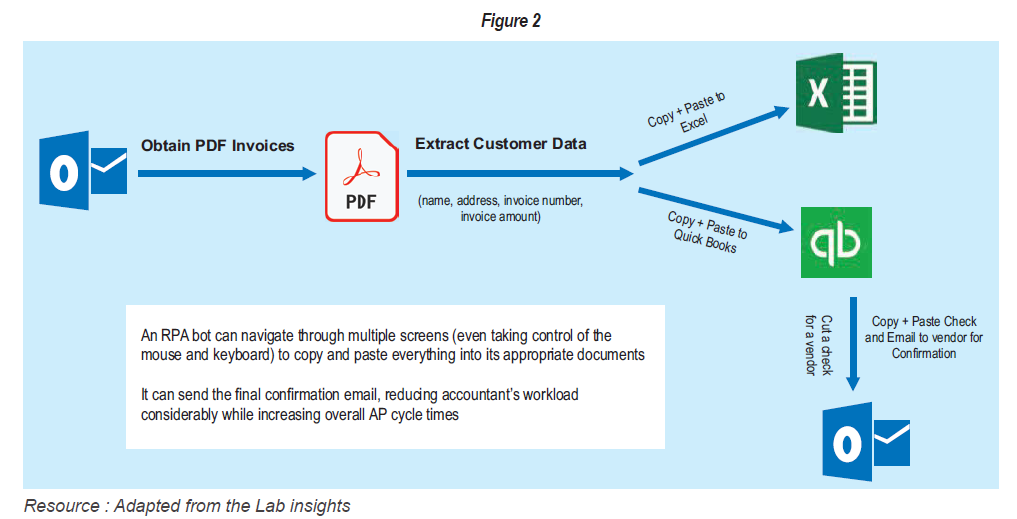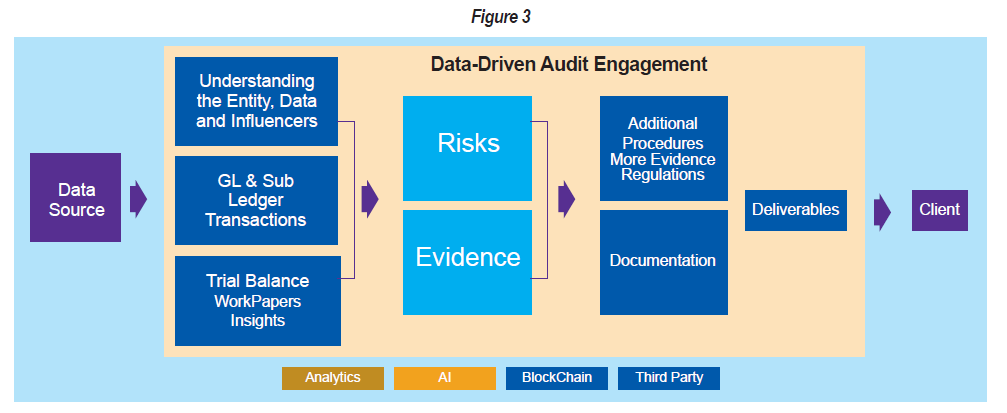A liaison
office (LO) has been an important mode of entry into India of many foreign entities
wishing to do business and make investments here.
A dispute
has been going on for quite some time about whether an LO has to be considered
as a Permanent Establishment (PE) of the non-resident in India and be subjected
to tax.
In this
article we have discussed various aspects relating to the taxability of an LO
in India, including the recent decision of the Supreme Court in the case of the
U.A.E. Exchange Centre.
1. BACKGROUND
In many
cases, an enterprise usually tests the waters outside its domestic jurisdiction
in an endeavour to expand business. In the initial phase of establishment of
business in the host country, a multinational corporation (MNC) conducts market
research, develops strategies to explore the foreign market, formulates plans, maintains
liaison with the government officials, etc. After such preliminary activities,
it commences operations in the foreign market, controlled or managed either
from the home country or in the foreign host country.
To undertake
such exploratory or precursory activities, MNCs establish an LO in the host
country. The RBI
also permits this, subject to the condition that it is venturing into certain
limited areas of permitted activities only. Undertaking any activity beyond the
rigours of the permitted activities requires an application for conversion of
such LO into a Branch Office or Project Office, or any other body corporate, as
the case may be.
Thus, an MNC
/ foreign company can do business in India either by opening an LO or a branch
office, or a limited liability partnership ?rm, or a subsidiary or wholly-owned
subsidiary, depending upon its business requirements in India. Each of the
above modes of setting up business presence in India is governed by the Foreign
Exchange Management Regulations.
As per
Schedule II read with Regulation 4(b) of the FEM (Establishment in India of a
Branch Office or a Liaison Office or a Project Office or any Other Place of
Business) Regulations, 2016 [FEMA 22(R)], an LO in India of a person resident
outside India is permitted to carry out the following limited activities:
(i) Representing the parent company / group
companies in India.
(ii) Promoting export / import from / to India.
(iii)
Promoting technical / financial collaborations between parent / group companies
and companies in India.
(iv) Acting
as a communication channel between the parent company and Indian companies.
Thus, an LO
is not permitted to carry out, directly or indirectly, any trading or
commercial or industrial activity in India. The LO can operate only out of
inward remittance received from the parent company in India. When a foreign
company operates through an LO in India, there is no income that is taxable in
India as it is not permitted to earn any income here. The activities mentioned
above are essentially of a preparatory or auxiliary nature.
2. WHETHER AN LO CONSTITUTES A PE IN INDIA?
As mentioned
above, as per the prevailing FEMA regulations, an LO cannot carry on any
activity in India other than activities permitted as per FEMA 22(R). However,
in practice it is observed in some cases that LOs carry out activities which
may not be limited to acting as a communication channel between the parent
company and Indian companies.
Thus, time
and again doubts arise in respect of the business activities carried out by a
foreign company in India through an LO and whether the said activities can be
taxable in India. The actual activities could vary from case to case. It may be
difficult to presume that an LO will not constitute a PE merely because RBI has
given permission for setting up an LO in India on specific terms and
conditions.
To determine
whether an LO constitutes a PE and consequent taxability of the same in India,
it is very important to examine whether it is carrying out an important part of
the business activities of the foreign company, or only the preparatory and
auxiliary activities as permitted under FEMA 22(R).
3. RELEVANT PROVISIONS OF THE INCOME-TAX ACT, 1961 AND
THE DOUBLE TAXATION AVOIDANCE AGREEMENTS (DTAAs)
Section 9 of
the ITA, 1961 contains provisions relating to income deemed to accrue or arise
in India and includes all income accruing or arising, whether directly or
indirectly, through or from any business connection in India. Explanation 1(a)
to section 9(1)(i) provides that in case of a business of which all the
operations are not carried out in India, the income of the business deemed u/s
9(1)(i) to accrue or arise in India shall be only such part of the income as is
reasonably attributable to the operations carried out in India.
Further,
Explanation 1(b) to section 9(1)(i) provides that in the case of a
non-resident, no income shall be deemed to accrue or arise in India to him
through or from operations which are confined to the purchase of goods in India
for the purposes of export.
Under
Article 5(1) and (2) of the DTAAs, an LO may be treated as ‘fixed place of
business’ and accordingly a PE in India. However, relief is provided under
Article 5(4) to exclude the activities which are ‘preparatory or auxiliary’ in
nature.
4. PREPARATORY OR AUXILIARY ACTIVITIES TEST – OECD
COMMENTARY
The terms
‘preparatory’ or ‘auxiliary’ have not been defined under the ITA or under the
DTAAs. Various judicial decisions have attempted to define the same. The term
‘preparatory’ has been explained to mean something done before or for the
preparation of the
main task. Similarly, the term ‘auxiliary’ has been interpreted to mean an
activity ‘aiding’ or supporting the main activity.
The OECD
Commentary on the Model Tax Convention on Income and on Capital dated 21st
November, 2017 in relevant paragraphs 59, 60 and 71 deals with various aspects
of preparatory auxiliary activities. The said paragraphs read as under:
‘59. It is often difficult to distinguish between
activities which have a preparatory or auxiliary character and those which have
not. The decisive criterion is whether or not
the activity of the fixed place of business in itself forms an essential and
significant part of the activity of the enterprise as a whole. Each individual
case will have to be examined on its own merits. In any case, a fixed place of
business whose general purpose is one which is identical to the general purpose
of the whole enterprise does not exercise a preparatory or auxiliary activity.
60. As a general rule, an activity that has a
preparatory character is one that is carried on in contemplation of the
carrying on of what constitutes the essential and significant part of the
activity of the enterprise as a whole. Since a preparatory activity
precedes another activity, it will often be carried on during a relatively
short period, the duration of that period being determined by the nature of the
core activities of the enterprise. This, however, will not always be the case
as it is possible to carry on an activity at a given place for a substantial
period of time in preparation for activities that take place somewhere else.
Where, for example, a construction enterprise trains its employees at one place
before these employees are sent to work at remote work sites located in other
countries, the training that takes place at the first location constitutes a
preparatory activity for that enterprise. An activity that has an auxiliary
character, on the other hand, generally corresponds to an activity that is
carried on to support, without being part of, the essential and significant
part of the activity of the enterprise as a whole. It is unlikely that an
activity that requires a significant proportion of the assets or employees of
the enterprise could be considered as having an auxiliary character.
71. Examples
of places of business covered by sub-paragraph e) are fixed places of business
used solely for the purpose of advertising or for the supply of information or
for scientific research or for the servicing of a patent or a know-how
contract, if such activities have a preparatory or auxiliary character.
Paragraph 4 would not apply, however, if a fixed place of business used for the
supply of information would not only give information but would also furnish
plans, etc. specially developed for the purposes of the individual customer.
Nor would it apply if a research establishment were to concern itself with
manufacture. Similarly, where the servicing of patents and know-how is the
purpose of an enterprise, a fixed place of business of such enterprise
exercising such an activity cannot get the benefits of paragraph 4. A fixed
place of business which has the function of managing an enterprise or even only
a part of an enterprise or of a group of the concern cannot be regarded as
doing a preparatory or auxiliary activity, for such a managerial activity
exceeds this level. If an enterprise with international ramifications
establishes a so-called “management office” in a State in which it maintains
subsidiaries, permanent establishments, agents or licensees, such office having
supervisory and coordinating functions for all departments of the enterprise
located within the region concerned, sub-paragraph e) will not apply to that
“management office” because the function of managing an enterprise, even if it
only covers a certain area of the operations of the concern, constitutes an
essential part of the business operations of the enterprise and therefore can
in no way be regarded as an activity which has a preparatory or auxiliary
character within the meaning of paragraph 4.’
In order to
determine whether an LO of an MNC constitutes its PE in India, an in-depth
analysis is required to be done based on the factual information available, for
example, considering the nature of the activities undertaken by the LO, the
business of the MNC and the overall facts and circumstances of the case. In
this it is very important to consider the various judicial precedents on the
subject.
5. INDIAN JUDICIAL PRECEDENTS
On the issue
of whether an LO constitutes a PE in India, there are mixed judicial
precedents, primarily based on the facts of each case.
In a few
cases, the Tribunals and Courts have held that an LO does not constitute a
fixed place PE in India because the LO was carrying on activities / operations
within the framework of permitted activities by the RBI, i.e. preparatory or
auxiliary activities. In this regard, useful reference can be made
to the following cases:
• IAC vs.
Mitsui & Co. Ltd. [1991] 39 ITD 59 (Delhi)(SB);
• Motorola
Inc. vs. DCIT [2005] 95 ITD 269 (Delhi)(SB);
• Western
Union Financial Services Inc. vs. ADIT [2007] 104 ITD 40 (Delhi)
• Sumitomo
Corporation vs. DCIT [2008] 114 ITD 61 (Delhi);
• Metal One
Corporation vs. DDIT [2012] 52 SOT 304 (Delhi);
• DIT vs.
Mitsui & Co. Ltd. [2018] 96 taxmann.com 371 (Delhi);
• Nagase
& Co. Ltd. vs. DDIT [2019] 109 taxmann.com 288 (Mumbai-Trib.);
• Kawasaki
Heavy Industries Ltd. vs. ACIT [2016] 67 taxmann.com 47 (Delhi-Trib.).
However, in
a few other cases, Tribunals / Courts have, based on the specific facts of the
cases, held that an LO constitutes a fixed place PE in India because it was
carrying on certain activities which were in the nature of commercial / core
activities of the taxpayer. A list of such cases is
given below:
• U.A.E.
Exchange Centre [2004] 139 Taxman 82 (AAR);
• Columbia
Sportswear Co. (AAR) [2011] 12 taxmann.com 349 (AAR);
• Jebon
Corporation India vs. CIT(IT) [2012] 19 taxmann.com 119 (Karnataka);
• Brown
& Sharpe Inc. vs. ACIT [2014] 41 taxmann.com 345 (Delhi-Trib.) affirmed in
Brown & Sharpe Inc. vs. CIT [2014] 51 taxmann.com 327 (All.);
• GE Energy
Parts Inc. vs. CIT(IT) [2019] 101 taxmann.com 142 (Delhi);
• Hitachi
High Technologies Singapore Pte Ltd. vs. DCIT [2020] 113 taxmann.com 327
(Delhi-Trib.).
Some other
relevant judicial precedents in this regard are as under:
• Gutal
Trading Est., In re [2005] 278 ITR 643 (AAR);
• Angel
Garment Ltd., In re [2006] 287 ITR 341(AAR);
• Cargo
Community Network PTE Ltd., In re [2007] 289 ITR 355 (AAR);
• Sojitz
Corporation vs. ADIT [2008] 117 TTJ 792 (Kol.);
• Mitsui
& Co. Ltd. vs. ACIT [2008] 114 TTJ 903 (Delhi);
• K.T.
Corpn. [2009] 181 Taxman 94 (AAR);
• IKEA
Trading (Hong Kong) Ltd. [2009] 308 ITR 422 (AAR);
• Mondial
Orient Ltd. vs. ACIT [2010] 42 SOT 359 (Bang.);
• M.
Fabricant & Sons Inc. vs. DDIT [2011] 48 SOT 576 (Mum.);
• Nike Inc.
vs. ACIT [2013] 125 ITD 35 (Bang.);
• Linmark
International (Hong Kong) Ltd. vs. DDIT (IT) [2011] 10 taxmann.com 184 (Delhi);
• CIT vs.
Interra Software India (P.) Ltd. [2011] 11 taxmann.com 82 (Delhi).
6. A BRIEF ANALYSIS OF SOME OF THE DECISIONS based on the nature of the activities of the
LOs is given below to understand the judicial thinking on the subject.
(A) Routine
functions of LO
Earlier, the
ITAT, Mumbai considering the specific facts in the case of Micoperi Spa
Milano vs. DCIT [2002] 82 ITD 369 (Mum.) had held that maintenance of a
project office in India and incurring expenses for maintaining such office,
cost of postage, telex, etc., indicates that the MNC has a PE in India.
However,
where routine functions are performed by the LO in India and for the purposes
of performing such routine functions the LO has been given limited powers, it
cannot be held that a MNC has a PE in India in the form of its LO.
In Kawasaki
Heavy Industries Ltd. vs. ACIT [2016] 67 taxmann.com 47 (Delhi- rib.),
the ITAT held that:
(a) The
powers / rights granted by an MNC to its LO in India such as (i) Signing of
documents for renting of premises, equipment, services with any person,
including Municipal bodies, governments, etc., as may be required for the
operation of the LO; (ii) Execution of contracts for purchase of items for
operation of the LO, etc. are specific to the operations of the LO and the
stand of the A.O., that the power of attorney is an ‘open document’ giving
unfettered powers to the LO, would be outside the scope of the initial approval
granted by the RBI.
(b) Prima
facie, a reading of the power of attorney does not demonstrate that the
employees of the assessee at the LO are authorised to do core business activity
or to sign and execute contracts, etc.
(c) The A.O.
has not brought on record any material, other than his interpretation of the
terms of the power of attorney, to demonstrate that the LO is carrying on core
business activity warranting his conclusion that the assessee has a PE in
India.
Thus, in
respect of routine functions of the LO, the same may not be considered as
constituting a PE in India.
(B) Purchase activities for the purposes of
exports
Under
Explanation 1(b) of section 9(1)(i), purchase
functions or a part thereof, performed by an LO in India has been consistently
held as outside the purview of such LO having any taxable income in India.
In Ikea
Trading (Hong Kong) Ltd. [2009] 308 ITR 422 (AAR), the AAR has held that
where the LO’s activities are confined only to facilitate the purchase of goods
in India for the purposes of export outside India, such activities are covered
by restriction / relief provided under Explanation 1(b) to section 9(1)(i) of
the Act and, accordingly, no income is deemed to accrue or arise in India with
respect to the operations carried out by the LO in India. A similar view has
been taken in ADIT (IT) vs. Tesco International Sourcing Ltd. [2015] 58
taxmann.com 133 (Bang.-Trib.).
The Karnataka
High Court in Columbia Sportswear Co. vs. DIT (IT) [2015] 62 taxmann.com
240, reversing the decision of the AAR in Columbia Sportswear Co.
[2011] 12 taxmann.com 349 (AAR), held that all the activities
undertaken by the LO of an MNC such as designing, manufacturing, identifying
vendors, negotiating with vendors, ensuring quality control of the products
manufactured by vendors, quality assurance, on-time delivery, acting as a
conduit or ‘go between’ between the vendors in India / Egypt / Bangladesh and the
MNC situated outside India, are ‘activities necessary’ for carrying out a
purchase function in India, as otherwise the goods purchased from India would
not find any customer outside India. Accordingly, such activities are not the
‘activities other than sale of goods’ as held by AAR, rather, they are an
extension / necessary part of the purchase function itself, so carried out by
the LO in India. Accordingly, appropriate relief as provided under Explanation
1(b) to section 9(1)(i) of the Act is required to be extended to the taxpayer.
(C) Information collection, research and
aiding activities
Initial
research, information collection and preliminary advertising undertaken by an
LO in India has been held to be in the nature of ‘preparatory’ or ‘auxiliary’
activity, and thus it has been held that the LO does not constitute the PE of
its MNC in India.
The AAR in
the case of K.T. Corporation [2009] 181 Taxman 94 (AAR) held that
the activities in the nature of:
(i) Holding seminars, conferences;
(ii)
Receiving trade inquiries from the customers;
(iii)
Advertising about the technology being used by the MNC in its products /
services and answering the queries of the customers;
(iv)
Collecting feedback from the customers / prospective customers, trade
organisations and not playing any role in pre-bid survey, etc., before entering
into the agreement with its customers, nor involving itself in the technical
analysis of the products / services, are in aid or support of the ‘core
business activity’ of the MNC and, thus, fall under the exclusionary clauses
(e) and (f) of Article 5(4) of the DTAA between India and Korea. It is
pertinent to note that the AAR also noted that the LO is confined to carrying
out preparatory or auxiliary activities only.
The AAR also
said, ‘However, we may add here that if the activities of the liaison office
are enlarged beyond the parameters fixed by RBI or if the Department lays its
hands on any concrete materials which substantially impact on the veracity of
the applicant’s version of facts, it is open to the Department to take
appropriate steps under law. But, at this stage, we proceed to give ruling on
the basis of facts stated by the applicant which cannot be treated as ex
facie untrue.’
Similarly,
the Delhi High Court in the case of Nortel Networks India International
Inc. vs. DIT [2016] 69 taxmann.com 47 held that where the Indian
subsidiary of the MNC negotiated and entered into contracts with the customers
of the MNC, the LO of the same MNC could not be held to be a PE of the MNC in
India, especially when the tax authorities had not brought on record any
evidence that the LO had participated in the negotiation of the contracts.
The ITAT,
Mumbai in the case of Nagase & Co. Ltd. vs. DDIT [2018] 96
taxmann.com 504 (Mum.-Trib.) held that in the absence of any material
or evidence brought on record by the Revenue authorities to the effect that the
LO was executing business or contracts independently with the customers in
India, the plea of the assessee that it was engaged in carrying out only
preparatory or auxiliary activities needs to be accepted and, accordingly, the
taxpayer’s LO in India did not constitute its PE in India.
(D)
Marketing activities
Where the LO
undertakes the preliminary activities of advertising, identification of customers,
attending to queries of customers, such activities would fall within the ambit
of preparatory / auxiliary activities and, accordingly, the LO would not
qualify as a PE of the MNC in India.
However,
where such activities cross the ‘thin-line’ of preparatory / auxiliary
activities and venture into performing income-generating activities, such
activities would require the LO to be treated as the PE of the MNC in India.
The
Karnataka High Court in the case of Jabon Corporation India vs. CIT (IT)
[2012] 19 taxmann.com 119 (Karnataka), while upholding the decision of
ITAT, Bangalore in the case of DDIT (IT) vs. Jebon Corpn. India [2010]
125 ITD 340 (Bang.-Trib.) that the LO has to be treated as the PE of
the Korean parent, held as follows:
‘10. It is on the basis of the aforesaid material, the Tribunal held that
the activities carried on by the liaison office are not confined only to the
liaison work. They are actually carrying on the commercial activities of
procuring purchase orders, identifying the buyers, negotiating with the buyers,
agreeing to the price, thereafter, requesting them to place a purchase order
and then the said purchase order is forwarded to the Head Office and then the
material is dispatched to the customers and they follow up regarding the
payments from the customers and also offer after-sales support. Therefore,
it is clear that merely because the buyers place orders directly with the Head
Office and make payment directly to the Head Office and it is the Head Office
which directly sends goods to the buyers, would not be sufficient to hold that
the work done by the liaison office is only liaison and it does not constitute
a permanent establishment as defined in Article 5 of DTAA. In fact, the
Assessing Officer has clearly set out that what was discovered during the
investigation and the same has been properly appreciated by the Tribunal and it
came to the conclusion that though the liaison office was set up in Bangalore
with the permission of the RBI and in spite of the conditions being
stipulated in the said permission preventing the liaison office from carrying
on commercial activities, they have been carrying on commercial activities.
11. It was further contended that the RBI has not taken any action and
therefore such interference is not justified. Once the material on record
clearly establishes that the liaison office is undertaking an activity of
trading and therefore entering into business contracts, fixing price for sale
of goods and merely because, the officials of the liaison office are not
signing any written contract would not absolve them from liability. Now that
the investigation has revealed the facts, we are sure that the same will be
forwarded to the RBI for appropriate action in the matter in accordance with
law. But merely because no action is initiated by RBI till today would not
render the findings recorded by the authorities under the Income-tax Act as
erroneous or illegal.
12. We are satisfied from the material on record that the finding recorded by
the Tribunal is based on legal evidence and that the finding that the liaison
office is a permanent establishment as defined under Article 5 of the DTAA and
therefore, the business profits earned in India through this liaison office is
liable for tax is established.’
The
Allahabad High Court in the case of Brown & Sharpe Inc. vs. CIT
[2014] 51 taxmann.com 327 (All.) held that the activities such as:
(i)
Explaining the products to the buyers in India;
(ii)
Furnishing information in accordance with the requirements of the buyers;
(iii)
Discussions on the commercial issues pertaining to the contract through the
technical representative, after which an order was placed by the Indian buyer directly to the Korean HO,
would be something more than ‘preparatory’ or ‘auxiliary’ activities and, accordingly, the LO was a PE
of the MNC in India. Further, the incentive plan designed for remuneration of the employees of the LO indicated
that the LO was undertaking not just the ‘advertising’ activities, rather such activities traversed the actual
marketing of products of the MNC in India as it was only on the basis of the
orders generated that an incentive was envisaged / organised for the employees.
In GE
Energy Parts Inc. vs. CIT (IT) [2019] 101 taxmann.com 142 (Delhi), the
Delhi High Court held that the LO of GE Energy Parts Inc. (GE US), established
to act as a communication channel, was carrying out core activity of marketing
and selling highly-sophisticated equipments of the US company, and hence the LO
was a fixed place PE of the assessee company in India. The GE LO was a fixed
place PE of GE due to the fact that (a) There was a fixed place of business;
(b) The fixed place of business was at the disposal of the employees of the LO,
more so when GE had not contested that activities of ‘some form’ were not
carried out from such premises and thus it was reasonable to assume that the
activities were carried through such premises; (c) Though the final word with
respect to the pricing of the products was with the HO, however, that won’t mean
that the LO was for mute data collection / information dissemination. The LO
discharged the vital responsibilities or at least had a prominent role in
contract finalisation, viz., extensive negotiations with its customers,
customisation of the products with respect to the requirements of the
customers, negotiating the financial parameters of the products and not
allowing the overseas entity to alter such terms without the consent of GE
India, etc. Accordingly, the LO was not performing merely liaising activities.
Defining the terms preparatory or auxiliary activities as ‘something remote
from the actual realisation of the profits’, the Court held that the
activities performed by the LO would not fall within the exception provided
under Article 5(3)(e) of the India-USA DTAA.
The Court
also held that GE’s overseas entity had agency PE for the following reasons:
(a) Where the expatriates / employees performed activities for different
entities of the same group, then it could not be construed that activities had
been performed for a single enterprise. Accordingly, the GE India (through the
employees of the LO and Indian subsidiary), constituted a dependent agent of GE
overseas MNC; (b) Relying on the decision of the Italian Court it held that the
active and major participation / involvement of the employees / representatives
in the negotiations / meetings with the customers indicated that the agents had
‘authority to conclude contracts’, even if final contracts were concluded by
the GE HO.
7. FUND REMITTANCE SERVICES – Decision of the Supreme Court in the case of
Union of India vs. U.A.E. Exchange Centre
In respect
of fund remittance services, the Supreme Court in Union of India vs.
U.A.E. Exchange Centre [2020] 116 taxmann.com 379 (SC) held that an
Indian LO of a United Arab Emirates (UAE) company did not constitute a PE in
India.
U.A.E.
Exchange Centre (the assessee), a company incorporated in the UAE, is engaged, inter
alia, in providing to non-resident Indians in UAE the service of remitting
funds to India. For its India-centric business, the assessee had set up four
LOs in Chennai, New Delhi, Mumbai and Jalandhar after obtaining prior approval
from the RBI u/s 29(1)(a) of the erstwhile Foreign Exchange Regulation Act,
1973.
As per the
business practice followed by the assessee, the funds collected from the NRI
remitters are remitted to India by either of the following two modes:
(i)
Telegraphic transfer: Under this mode the amount is remitted telegraphically by
transferring directly from the UAE through normal banking channels to the
beneficiaries in India and the LOs have no role to play except attending to
complaints regarding fraud, etc.
(ii)
Physical dispatch of instruments: Under this mode, on a request from the NRI
remitter, the assessee sends instruments such as cheques / drafts through its
LOs to beneficiaries in India. For this purpose, the LOs download the
particulars of the remittance (while staying connected to the server in the
UAE), and print and courier the instruments to beneficiaries in India.
In this
case, the contract pursuant to which the funds are remitted to India is entered
into between the assessee and the NRI remitter in the UAE. Moreover, the funds
for remittance as well as the commission are collected in the UAE.
From A.Y.
1998-99 to 2003-04, the assessee was filing Nil returns in India on the basis
that no income had accrued or deemed to have been accrued in India under the
ITA or the India-UAE DTAA. However, owing to some doubt expressed by the
Revenue, the assessee filed an application for advance ruling before the
Authority for Advance Rulings (AAR) in 2003 seeking a ruling on ‘whether any
income is accrued / deemed to be accrued in India from the activities carried
out by the company in India’.
AAR decision
The AAR
ruled that the income of the assessee was deemed to have accrued in India on
the basis that it had a ‘business connection’ in terms of section 9(1) of the
ITA insofar as activities concerning physical dispatch of instruments was
concerned. The AAR observed that without the activities of the Indian LOs, the
transaction of remittance would not be complete. Further, the commission earned
by the assessee covers not only the activities carried out in the UAE, but also
the activities carried out by the LOs in India.
The AAR also
held that the ‘preparatory or auxiliary’ exception to formation of a PE under
the India-UAE DTAA would not be applicable in respect of physical dispatch of
instruments. This was on the basis that a transaction for remittance would not
be completed without the activities of the Indian LOs. Specifically, the AAR
noted that the role of the LOs’ physical dispatch of instruments is ‘nothing
short of performing the contract of remitting the amounts at least in part.’
Delhi High
Court decision
The assessee
challenged the AAR ruling by way of a writ petition in the Delhi High Court.
The High Court noted that the AAR’s discussions and findings on the ‘business
connection’ test under domestic law were unnecessary, considering the scope of
section 90 of the ITA which allows for tax treaties to override domestic law
provisions. Accordingly, the High Court restricted its analysis to the
applicable provisions of the India-UAE DTAA, i.e., Articles 5 and 7.
The Court
held that although an LO comes within the inclusive list of fixed places of
business under Article 5(2)(c), it is subject to exclusions under Article 5(3),
including fixed places of business maintained solely for carrying out
activities which are ‘preparatory or auxiliary’ in nature. While relying on the
common meaning of the terms ‘preparatory or auxiliary’ under Black’s law
dictionary (i.e., activities which aid / support the main activity), the Court
concluded that the activities performed in respect of physical dispatch of
instruments were merely ‘preparatory or auxiliary’ in nature. It observed that
the error committed by the AAR was to read the test of ‘preparatory or
auxiliary’ which permits making a value judgment on whether the transaction
would or would not have been completed without the activities of the LOs and
were, therefore, significant activities. The Court indicated that the test of ‘preparatory
or auxiliary’ is not a function only of whether the activities under
consideration led to completion of the transaction.
In arriving
at its conclusion, the High Court applied the judgment of the SC in DIT
(IT) vs. Morgan Stanley & Co. [2007] 162 Taxman 165 (SC) and
accorded a liberal and wide interpretation to the exclusionary clause of PE.
The reason for this was that by invoking clauses of PE, income which otherwise
neither accrues / arises in India becomes taxable in India by virtue of a ‘deeming
fiction.’
Supreme
Court judgment
An SLP was
filed by the Revenue against the High Court decision. The core issue before the
Apex Court was whether the activities carried out by the LOs in India would
qualify the expression ‘of preparatory or auxiliary character’ as mentioned in
Article 5(3)(e) of the India-UAE DTAA.
In
confirming the finding of the High Court that the activities conducted by the
LOs were ‘preparatory or auxiliary’ and hence excludable from the purview of
PE, the Supreme Court also referred to the limited permission granted by the
RBI under FERA to the assessee regarding the activities to be conducted by the
LOs.
The Supreme
Court noted that as per the nature of activities allowed for under the RBI
permission, the LOs were only allowed to provide incidental service of delivery
of cheques / drafts drawn on a bank in India. They were not allowed to perform
business activities such as (i) entering into a contract with any party in
India; (ii) rendering consultancy or any other service directly or indirectly
with or without consideration to anyone in India; (iii) borrowing or lending
any money from or to any person in India without RBI’s permission. Thus, it was
amply clear that the LOs in India were not to undertake any other activity of
trading (commercial or industrial) or enter into any business contracts in its
own name in India. On this basis, the Supreme Court concluded that the nature
of activities conducted by the LOs as circumscribed by the RBI constituted
‘preparatory or auxiliary’ in character, and hence outside the purview of PE.
The Court
noted further that through the LOs the assessee was not carrying on any
business activity in India, but only dispensing with the remittances by
downloading the information from the UAE server and printing the cheques /
drafts. The LOs could not even charge commission / fee for their services.
Therefore, no income actually accrued to the LOs u/s 2(24) of the ITA.
The Supreme
Court further held that the activities of the LO of the taxpayer in India are
limited activities which are circumscribed by the permission given by the RBI
and are of preparatory or auxiliary character and, therefore, covered by
Article 5(3)(e). As a result, the ?xed place used by the respondent as LO in
India would not qualify the de?nition of PE in terms of Articles 5(1) and 5(2)
of the DTAA on account of non-obstante and deeming clause in Article
5(3) of the DTAA. Hence, no tax can be levied or collected from the LO of the
taxpayer in India in respect of the primary business activities concluded by
the taxpayer in the UAE.
The Supreme
Court also observed that after the enactment of the Finance Act, 2003,
Explanation 2 to section 9(1)(i) of the Act was inserted which de?ned business
connection as business activity carried out by a person on behalf of a
non-resident. In this regard, the Court held that even if the stated activities
of the LO of the taxpayer in India are regarded as business activity, the same
being ‘of preparatory or auxiliary character’, by virtue of Article 5(3)(e) of
the DTAA, the LO of the taxpayer in India which would otherwise be a PE, is
deemed to be expressly excluded from being so. Since, by a legal ?ction, it is
deemed not to be a PE of the taxpayer in India, it is not amenable to tax
liability in terms of Article 7 of the DTAA.
At present,
there are few precedents which provide guidelines for the ‘preparatory or
auxiliary’ test such as (i) to check whether the activities performed in the
fixed place of business form an essential and significant part of the
enterprise as a whole as held in Western Union Financial Services Inc.
vs. ADIT [2007] 104 ITD 40 (Delhi); (ii) whether the activities
performed in the fixed place of business form part of the core business
activities of the enterprise, as held in Angel Garments Ltd. [2006] 287
ITR 341 (AAR).
After
analysing the facts, the Supreme Court held the activities of the LOs to be of
‘preparatory or auxiliary’ nature without setting out guidelines for the
application of the ‘preparatory or auxiliary’ test. It would have been
extremely helpful if the Supreme Court would have laid down detailed guidelines
for the application of the ‘preparatory or auxiliary’ test.
The above
ruling is quite relevant for money remittance companies and potentially other businesses
which are primarily operated from outside India with some preparatory or
auxiliary activities in India.
It is to be
noted though that India has introduced an equalisation levy of 2% on certain
non-resident service providers providing services to customers in India, and
its application with respect to the specific facts may need evaluation.
Further, the
above decision is a welcome decision, wherein along with providing comments on
the meaning of ‘preparatory or auxiliary character’, the Court has re-affirmed
the guiding principle of ‘treaty override’ which forms the pillar of the
international tax law in India.
The Supreme
Court has laid emphasis on bringing out the characteristics of what can be
termed as ‘of preparatory or auxiliary character’ which shall be relevant for
future cases. Further, the Court has de?ned the rationale of taxability due to
which the judgment shall hold persuasive value for similar cases.
The decision
seems to lay down a broad guideline that where the activities of an LO are
restricted to the approvals granted by the RBI, such activities should qualify
as preparatory or auxiliary in nature and should not constitute a PE in India.
8. PRECAUTIONS REGARDING LOs FOR NOT BEING
CONSIDERED AS PEs
The
important point here would be to restrict the activities of the LO to
preparatory or auxiliary work only. Further, the LO should not venture into or
towards activities which could be viewed as commercial or core activities
undertaken on behalf of the foreign entity or its group entity. If it does so,
not only could the LO trigger a PE risk in India, but it could also be seen as
going beyond the domain of the activity permissions granted by the RBI.
Further, appropriate documentation should be maintained to prove that the
activities of the LO are preparatory or auxiliary in nature such as, for
instance, the RBI approval letter in the case of the U.A.E. Exchange Centre,
which reflected that the activities of the LO were mere support services to the
foreign parent entity.
In our view,
one should not presume that an LO or place of business will not constitute a PE
merely because the RBI or a government body has given permission for its
establishment in India. To determine the Indian tax implications, it is
critical to examine whether the LO is carrying out an important part of the
business activity of the foreign company (i.e., a commercial activity which is
core income-generating), or whether it is merely aiding or supporting
activities of the main business.
9. BEPS ACTION 7 AND MULTI-LATERAL INSTRUMENT (MLI)
While
analysing the ‘preparatory or auxiliary’ activities, one may additionally need
to be mindful of the BEPS Action Plan 7 and Article 13 of the MLI which deal
with the issue of artificial fragmentation of activities between various group
companies to avail the benefit of ‘preparatory or auxiliary’ activities.
Specific
activity exemption
In relation
to tax treaties to which the provisions of MLI regarding specific
activity-based exemption apply, it will become important to demonstrate that
the stated activity in the exclusion clause (advertising, storage, delivery,
etc.) is indeed ‘preparatory or auxiliary’ in nature. As the world moves
towards complex and innovative business models which rely on limited physical
presence in the country where the customers reside, foreign players must
assess, based on the facts, whether their Indian presence can still be said to
be merely aiding the core business in order to avail exemption under the
respective tax treaty.
Anti-fragmentation
rules
Article 13
is incorporated in the MLI with a view to address the issue of artificial
avoidance of the PE status through fragmentation of activities between
closely-related enterprises. Thus, businesses carrying out more than one
activity in a country which earlier individually were getting covered under the
term ‘preparatory or auxiliary character’ and hence were not forming a PE in
India, could be subject to the provision of Article 13 of the MLI. Accordingly,
such activities may thus form a PE in India if the activities performed when
seen cumulatively exceed what can be considered as of ‘preparatory or auxiliary
character’.
However, one
would have to first check whether Article 13 of the MLI applies to the relevant
DTAA in question.
With MLI
coming into force and India being a signatory thereto, going forward the
business models would need to be independently examined under the provisions of
the MLI for ascertaining whether or not a PE is established. Now, with
implementation of BEPS and signing of MLIs, litigation on this issue may
further intensify as the Indian tax authorities would now have additional
ammunition to target the LOs.
India has
opted for Option A and anti-fragmentation rules. Accordingly, in India no
specific exemption would be available unless the activities are preparatory or
auxiliary in nature and also there should not be artificial fragmentation of
activities within the group.
10. CONCLUSION
Whether or
not the activities of LOs constitute a PE of the non-resident entity is a very fact-speci?c
and vexed issue. In the past, where an LO has exceeded its scope of permitted
activities, courts have held that such an LO can constitute the PE of the
foreign entity in India. Therefore, it is important to ensure at all times that
an LO in India operates within the limits set out by RBI.
The
determination of the question as to whether any activities of an LO qualify as
preparatory or auxiliary in nature would depend upon the facts of each case and
the nature of business of the taxpayer. In order to decide the status of the
LO, a functional and factual analysis of the activities performed by it needs
to be undertaken.
It is very important to
keep in mind that all the aforementioned judicial precedents should be
critically analysed in the light of BEPS Action Plan 7, MLI and changes in the
OECD Commentary, before applying the same on the factual matrix of a particular
case.
Whether in sorrow or in happiness,
a friend is always a friend’s support.
— (Valmiki Raamaayan 4.8.40)

